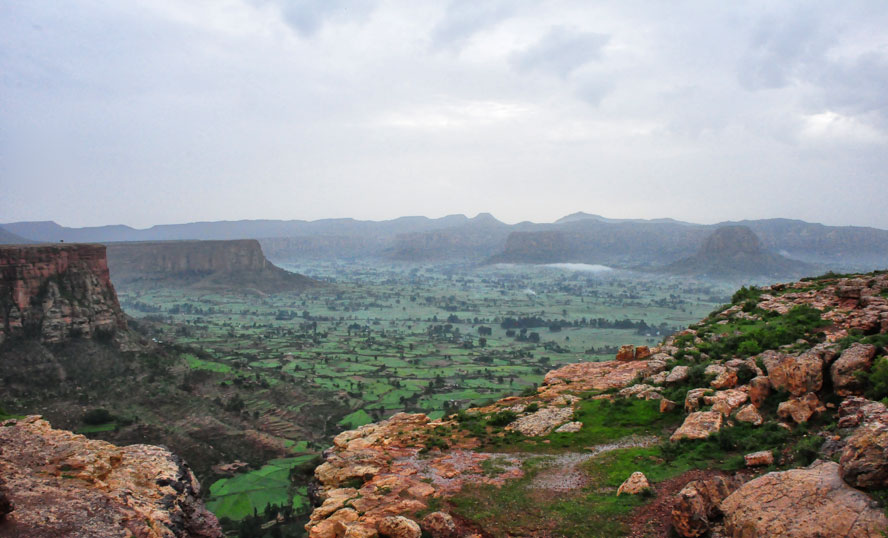Secondary menu
Hunger and Torture Threaten Tigrayans
How Canada’s current inaction on Tigrayan rights violations is reminiscent of old failures

Hundreds of thousands of people in Ethiopia, the majority being ethnic Tigrayans, are suffering human rights violations from starvation, sexual assault, and torture. Countless more are at risk if the current Ethiopian civil war continues unabated, and the Ethiopian government continues to prevent aid from reaching Tigrayans. Canadian Foreign Affairs Minister Mélanie Joly says that Canada is calling for a “peaceful solution” to the civil war, starting “with a ceasefire”.
Canada cannot solve this situation on its own. Nevertheless, as some advocates in the Tigrayan community have asserted, Canada can take steps beyond abstract statements to help Tigrayans in danger. Indeed, advocates for Tigray are calling on Canada to sponsor more specific measures that may sooner help those whose human rights are being violated.
Addressing the core issues of the civil war
A key motivating issue of the Ethiopian civil war is political strife between the Tigrayan People’s Liberation Front (TPLF) and the Ethiopian government led by President Abiy Ahmed. The TPLF is an influential and aggressive political party and militia which controls Tigray. It has been calling for political change in Ethiopia since President Ahmed cancelled the August 2020 Ethiopian elections, citing COVID-19 concerns.
Given the political basis for this conflict, a more efficient path to a temporary ceasefire might be power brokerage. Mulugeta Abai, the Executive Director for the Canadian Centre for Victims of Torture and an Ethiopian refugee, believes Canada can lead such a process. Abai argues that by supporting an “inclusive and transitional government,” Canada would be doing more to help end violence and the ongoing shelling of Tigrayans by Ethiopian forces.
In eschewing vague statements for this concrete advocacy, Canada can also facilitate a more rapid provision of aid to those suffering from the civil war and food shortage in Tigray. The United Nations Office for the Coordination of Humanitarian Affairs estimates that 400,000 people are facing catastrophic, “famine-like” conditions in Tigray, due in part to Ethiopian airstrikes preventing NGOs from reaching those in need. As of November 10th, no aid had reached the Tigrayan capital of Mekele since October 18th. In addition to mass starvation, there is evidence that numerous survivors of sexual violence in Tigray are unable to obtain post-rape care.
Repeating past mistakes
Unfortunately, this is not the first time Canada has put forward inadequate solutions to a Tigrayan famine exacerbated by civil war. During the Ethiopian civil war and famine in the late 1980s, most of those who suffered were residents of Tigray and Eritrea (then, still a part of Ethiopia). Canada nevertheless continued to provide most of its famine aid directly to the Ethiopian government.
However, just as it is today, Ethiopia was led by a regime in direct conflict with Tigrayan militias. As a result, little of the Canadian aid made it to Tigray where it was needed most. In the late 1980s, Canada underutilized solutions such as sending aid to Tigray through Sudan to circumvent the Ethiopian government. Canada refrained from providing aid directly to Tigray seemingly to avoid causing friction between it and the Ethiopian government.
Providing shelter from torture
Today, immediate solutions like sending aid through Sudan to Tigray are presently ineffective because of continued Ethiopian airstrikes. Nevertheless, there is a way Canada might be able to immediately help Tigrayans in government-controlled parts of Ethiopia. Though they may have greater food security in these areas, Tigrayans there are nonetheless at risk of human rights violations. The Globe and Mail has documented numerous arbitrary detentions of Tigrayans, often resulting in torture by the Ethiopian government since the government declared a state of emergency.
Furthermore, President Ahmed and Ethiopian authorities have publicly called for Ethiopians to take up arms against Tigrayans, regardless of allegiance with the TPLF. These immediate threats to Tigrayans’ freedoms and lives in government-controlled areas have prompted Tigrayans in Canada to call for Canada to help directly. One way they propose would be for Canada to open its embassy in Addis Ababa to shelter Tigrayans. Canada has not yet adhered to these calls.
Will Canada turn a new page?
Clear evidence of rights violations against Tigrayans in Ethiopia points to a simple conclusion: if Canada continues its inaction, it is repeating its past mistakes in standing by while Ethiopia blocks needed aid to Tigray and preys on Tigrayans’ human rights. Instead, Canada should respond to calls to action and take a different approach to help Tigrayans. In addition to promoting a concrete political solution to the violent civil war, this approach could include pressuring the Ethiopian government to suspend its “siege” of Tigray so that aid can safely enter the region.
Additionally, beyond opening its embassy to shelter Tigrayans facing persecution in Addis Ababa, Canada could promote and assist an independent investigation into Ethiopian human rights violations. Canada’s current report partially relies on information from the Ethiopian government and thus should be updated to reflect more impartial sources, especially as evidence of Ethiopian torture mounts. Only with stronger and more definite measures can Canada prove it has learned from its past mistakes and is now a determined advocate for the human rights of Tigrayans.
